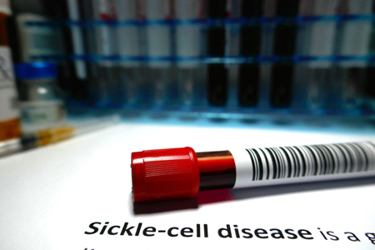Tessera Therapeutics Advances In Vivo Gene Therapy For SCD

By Erin Harris, Editor-In-Chief, Cell & Gene
Follow Me On Twitter @ErinHarris_1

Last year, Tessera Therapeutics’ CEO, Dr. Michael Severino, was my guest on Cell & Gene: The Podcast to discuss Gene Writing, the biotech’s genome engineering technology that writes therapeutic messages into the genome to treat diseases at their source. Severino shared why delivery has always been a challenge for gene editing technologies and why Gene Writing is different when it comes to efficient delivery. Fast forward to 2025, and Tessera’s continues its development for Gene Writers for sickle cell disease (SCD) with the goal of directly correcting the sickle mutation through a one-time IV treatment.
Unlike recently approved gene therapies, which involve complex procedures like stem cell collection, ex vivo cell manipulation, and chemotherapy, Tessera’s in vivo approach could simplify treatment and reduce risks, hospital stays, and burdens on patients and families. Tessera’s work caught the attention of the Bill & Melinda Gates Foundation, which has agreed to jointly fund their in vivo program for SCD. The funding includes an initial investment with potential total investment of up to $50 million with the intention of bringing Tessera’s SCD program into the clinic.
I wanted an update on the SCD program and the investment, so I caught up with the company’s CSO, Michael Holmes, Ph.D. Here’s what he had to say.
What are the main challenges in developing an in vivo gene therapy for sickle cell disease?
Currently, there are no commercially available in vivo curative treatments for SCD. The only potentially curative options are ex vivo approaches, which require hematopoietic stem cell (HSC) transplants. However, these procedures come with significant risks, including complications from bone marrow transplants, such as graft-versus-host disease, infertility, long-term immunosuppression, secondary cancers, and mortality. A major challenge in developing an in vivo genetic therapy is achieving efficient delivery to long-term HSCs, which is essential for a durable cure. At Tessera, we are addressing this with our proprietary lipid nanoparticle (LNP)-based delivery platform. This technology enables our RNA Gene Writers to be delivered directly to stem cells in their native bone marrow niche through a simple IV infusion, offering a potentially safer and more accessible solution for patients.
How does the partnership with the Bill & Melinda Gates Foundation align with Tessera’s goals for global accessibility?
SCD is the most common life-threatening monogenic condition globally, affecting an estimated six million people, primarily in sub-Saharan Africa. At Tessera, our mission is to develop and bring a transformative therapy to SCD patients worldwide. The support from the Bill & Melinda Gates Foundation will enable us to accelerate our timelines and expand access to this much-needed treatment on a global scale.
What milestones does Tessera hope to achieve with the potential $50 million investment from the Gates Foundation?
While the specific details of the agreement remain confidential, this funding is intended to support the advancement of our SCD program toward clinical development, bringing us closer to delivering life-changing therapies to patients in need.
How does Tessera envision its SCD treatment reshaping the global landscape for sickle cell disease management?
We aim to revolutionize care by developing a one-time in vivo correction for SCD patients without the need for mobilizing agents or myeloablative pre-conditioning regimens, stem cell transplantation, prolonged hospitalization or complex ex vivo manufacturing. We're excited to continue advancing this program towards the clinic because we think this will be the first SCD program with curative intent that can be safer, easier, and more scalable than ex vivo approaches. Our ultimate goal is to make this therapy broadly accessible—not only in the developed world but also in underserved regions where the burden of SCD is highest.
Can you elaborate on the process of correcting the sickle mutation to wild type using Gene Writers?
SCD is most commonly caused by a single genetic change - a one nucleotide substitution in the hemoglobin subunit beta, or HBB, gene that results in abnormal hemoglobin production prone to sickling. Through a mechanism known as target-primed reverse transcription, we aim to permanently correct the DNA by delivering two RNA components, an mRNA encoding the protein of our Gene Writer and an RNA template to repair the HBB gene, encapsulated in a proprietary targeted LNP. This process makes a single base pair change of T-to-A, restoring the HBB gene to its normal, or wild-type, state in HSCs. By doing so, we intend to restore the production of healthy adult hemoglobin, addressing the root cause of the disease.
What safety considerations are being addressed in the development of this in vivo gene therapy approach?
Ensuring safety is our top priority. We are conducting extensive preclinical studies, including studies evaluating biodistribution, safety/tolerability, and genotoxicity to thoroughly assess and characterize the safety profile of our therapy before advancing to clinical trials.
